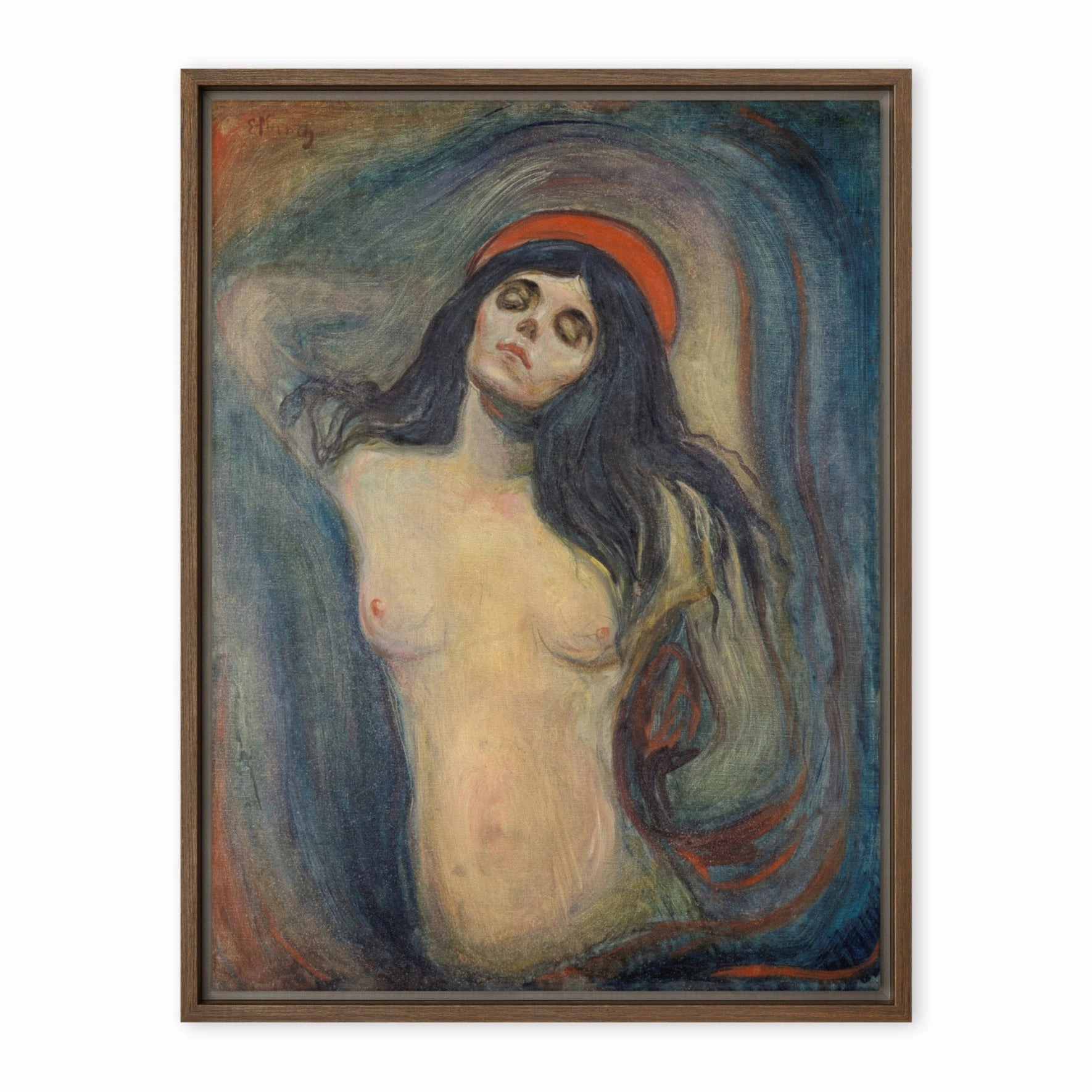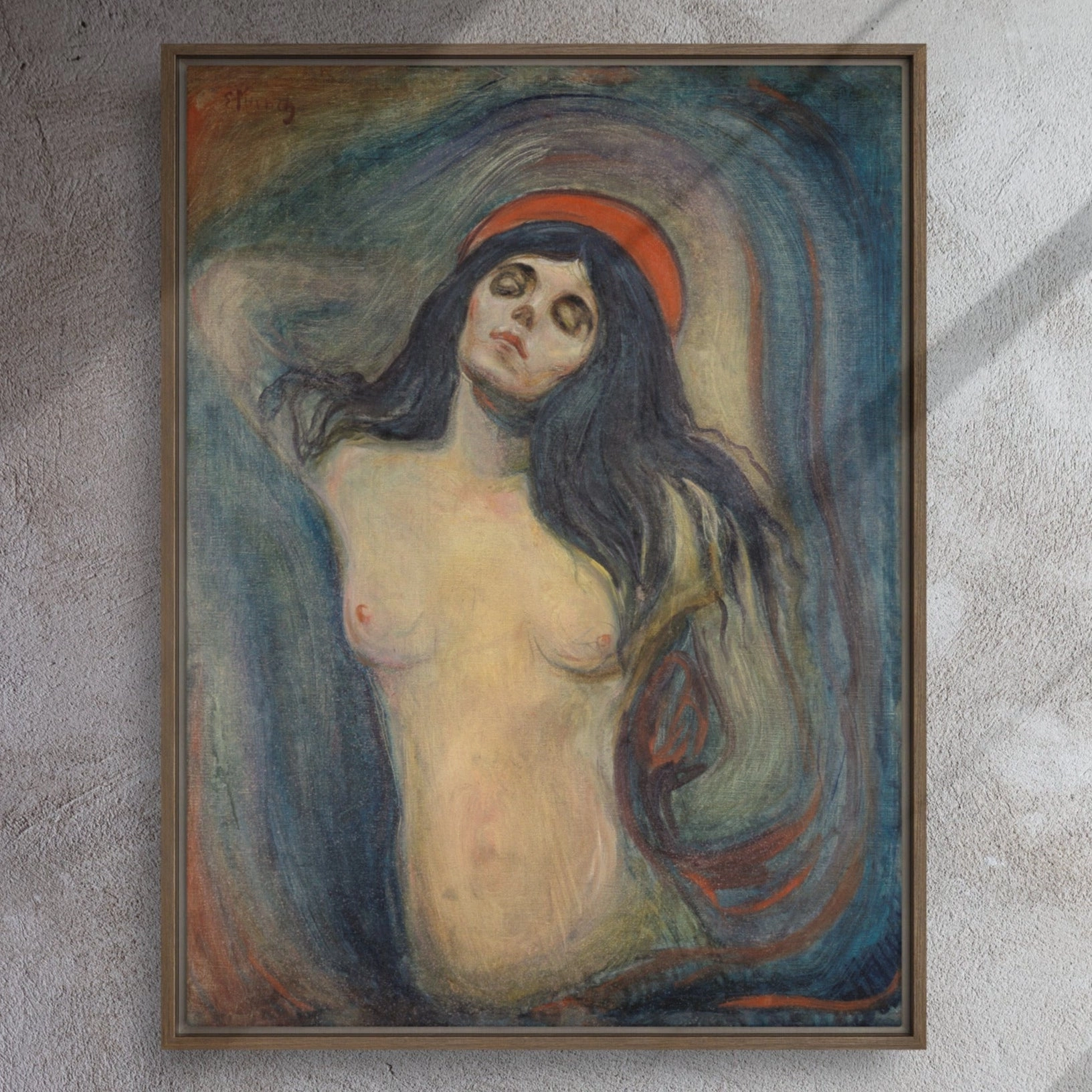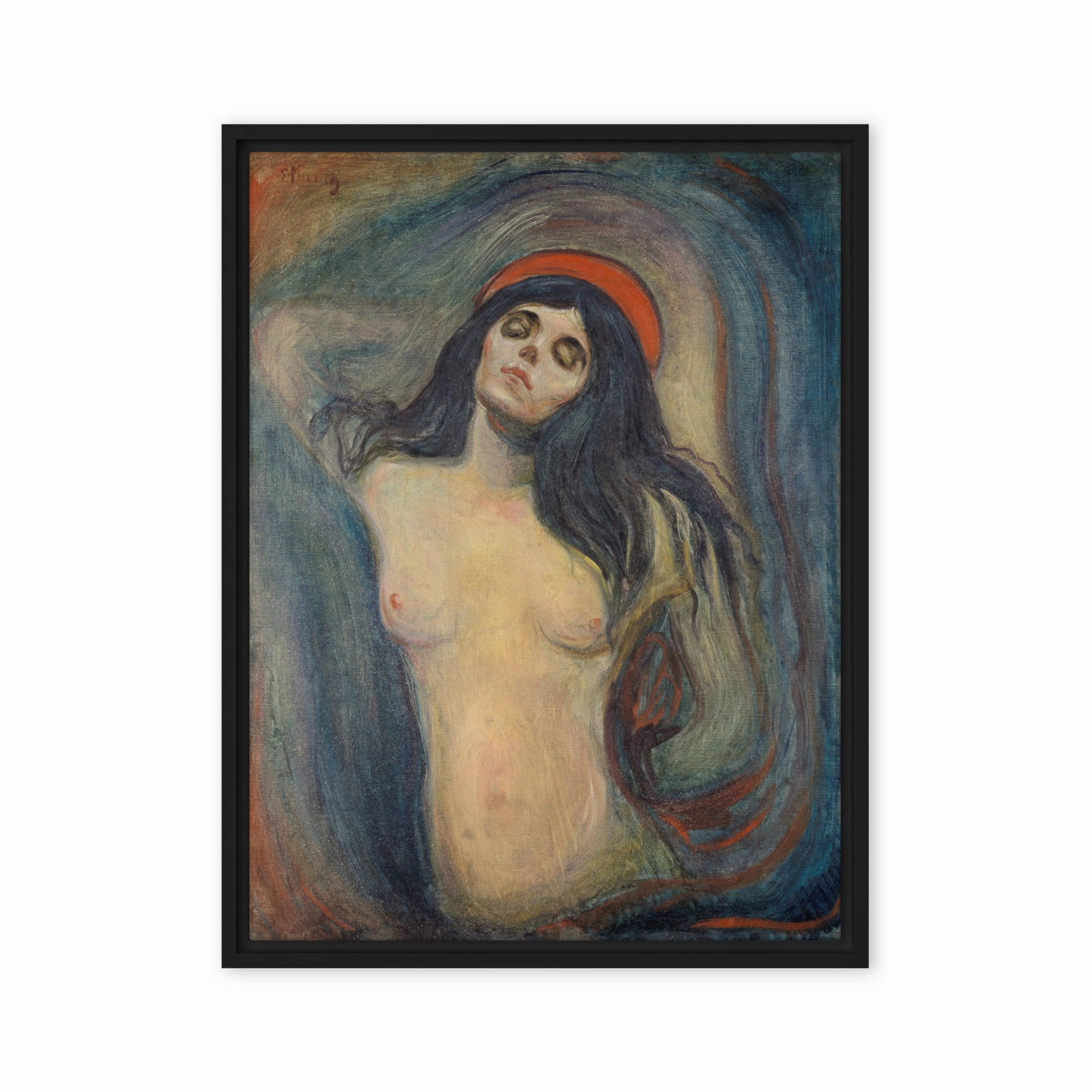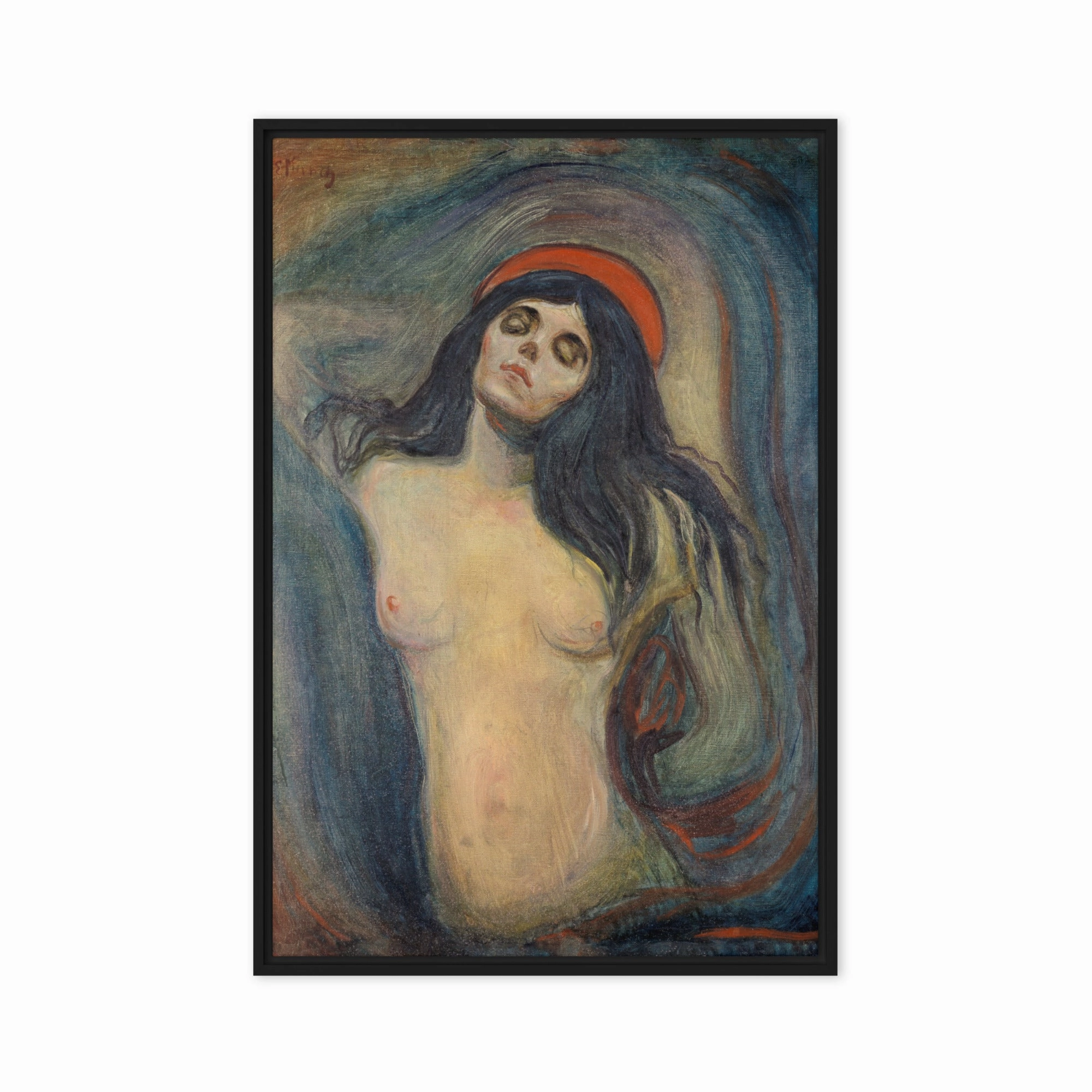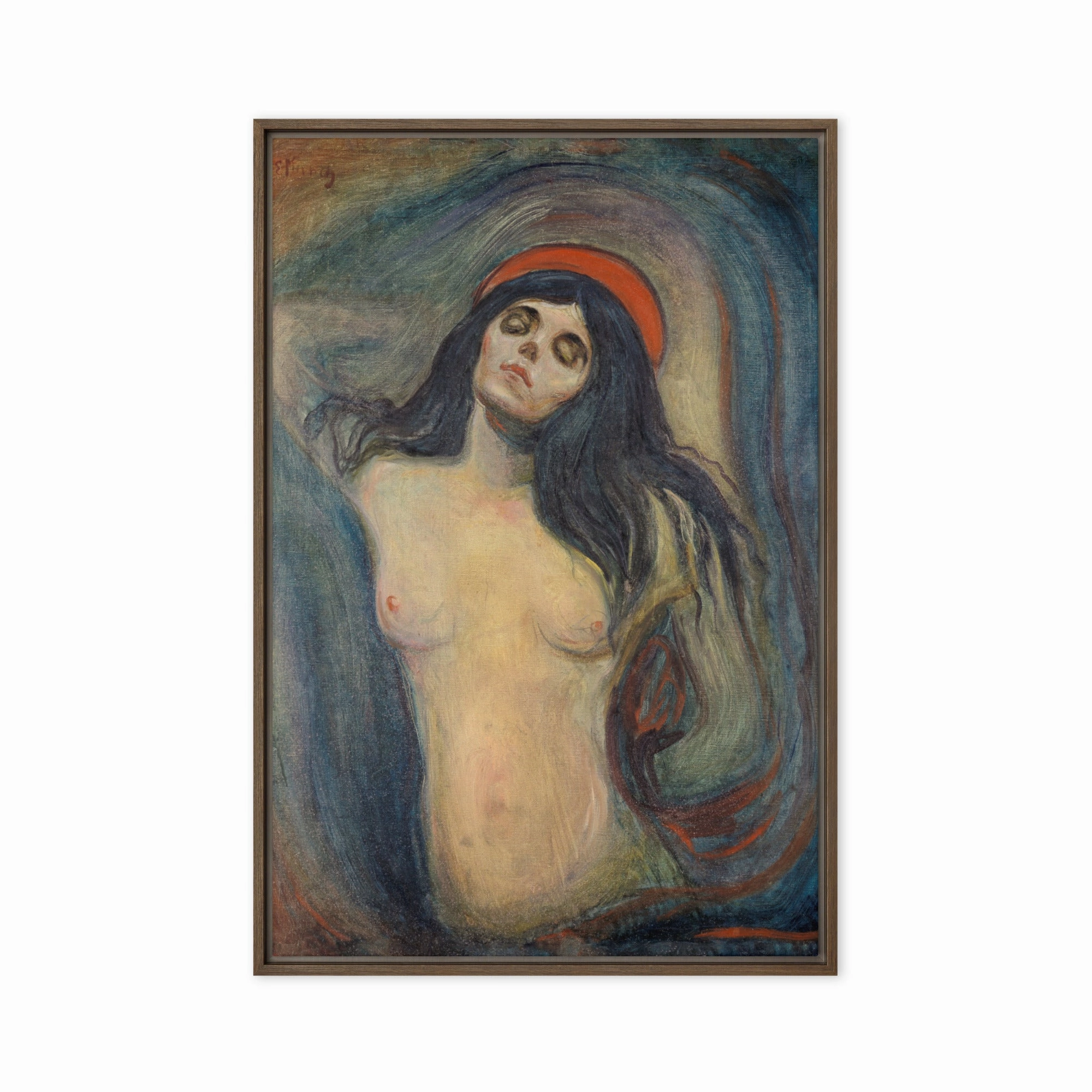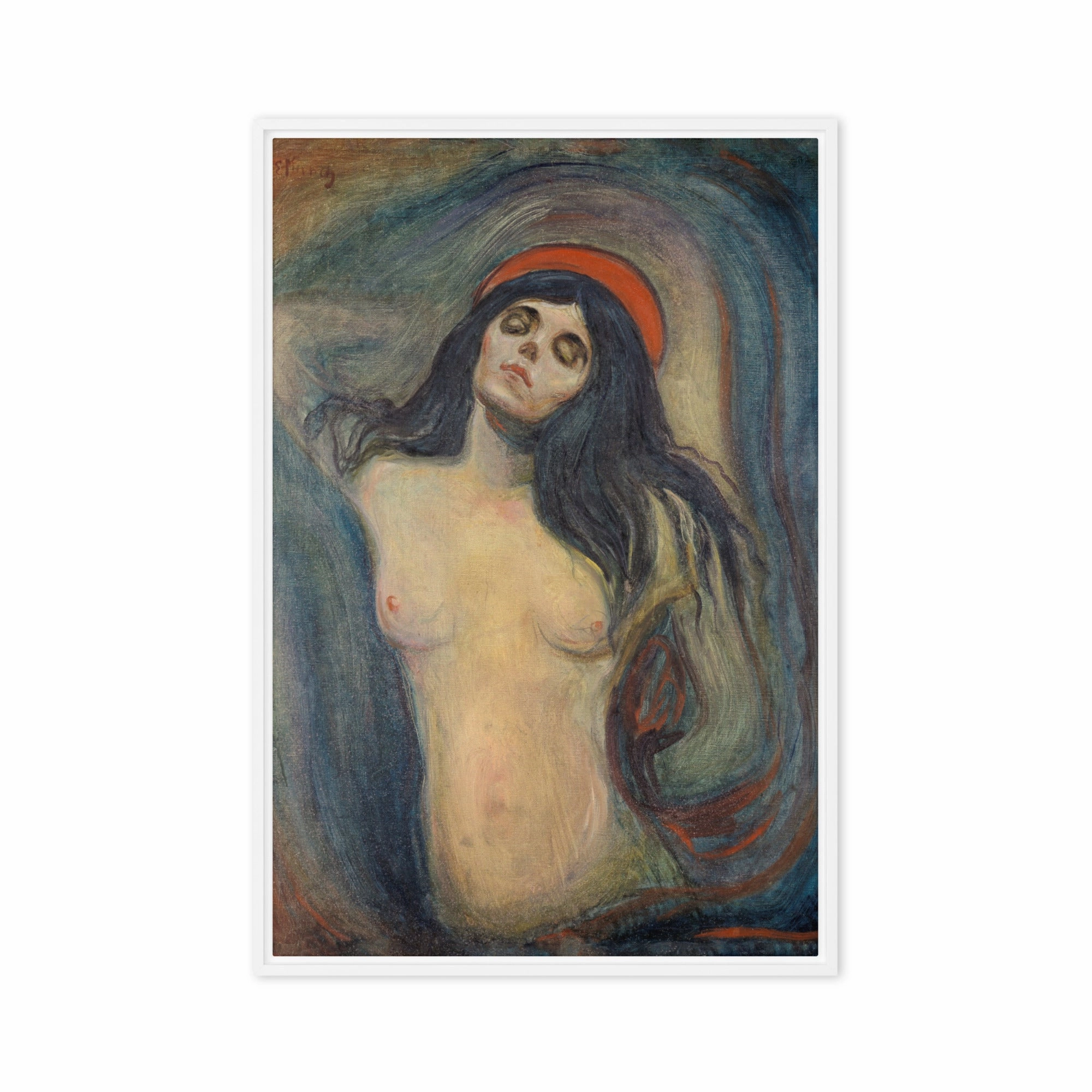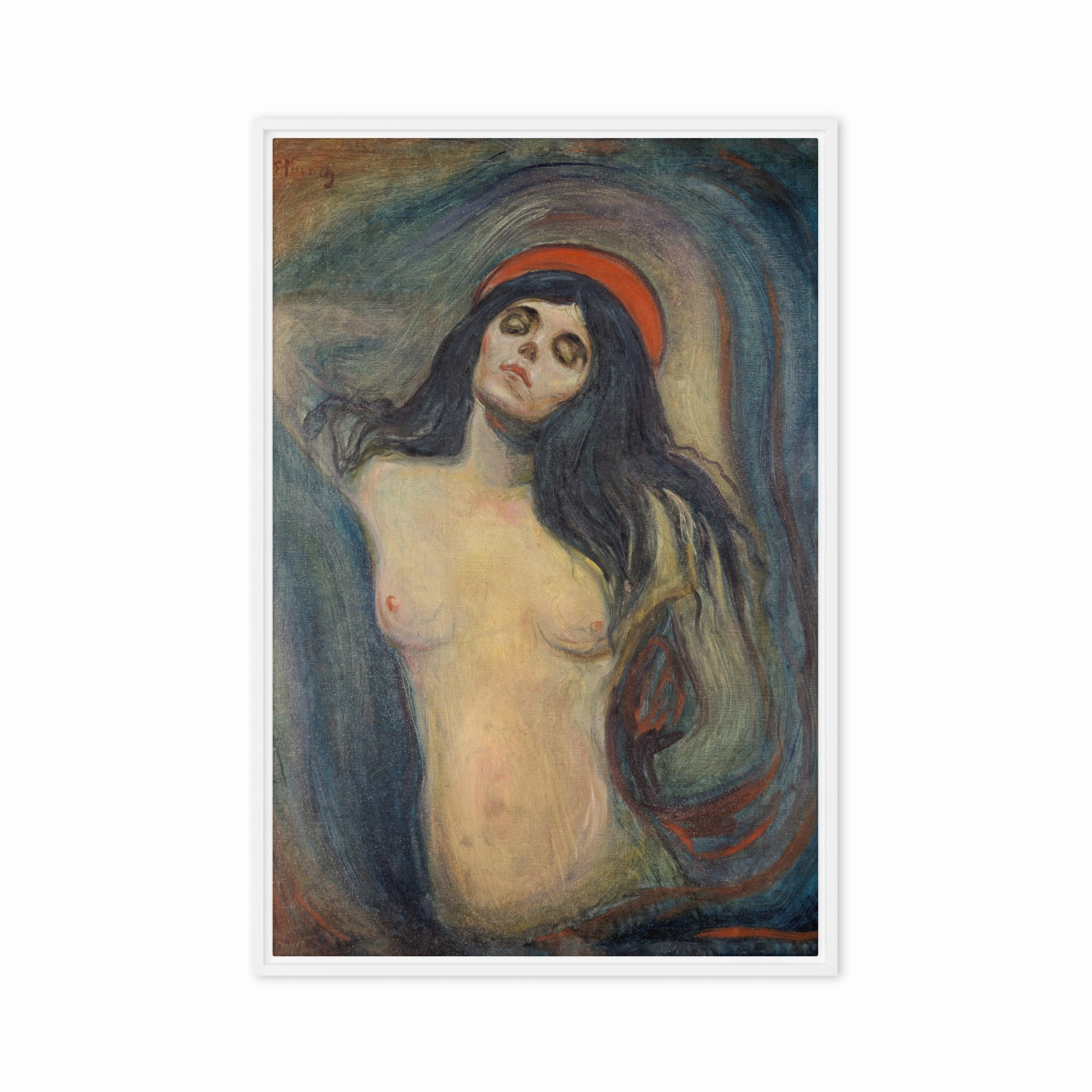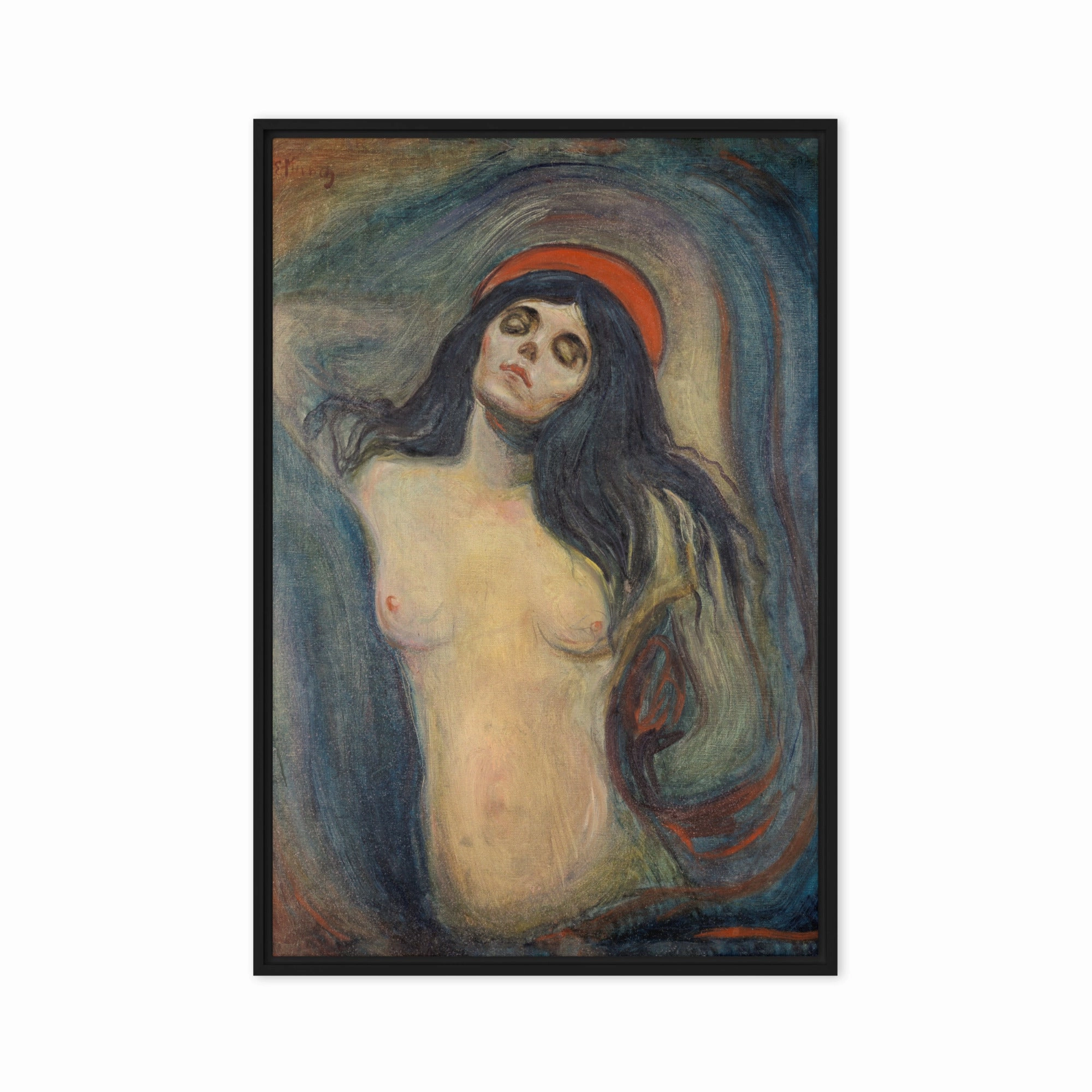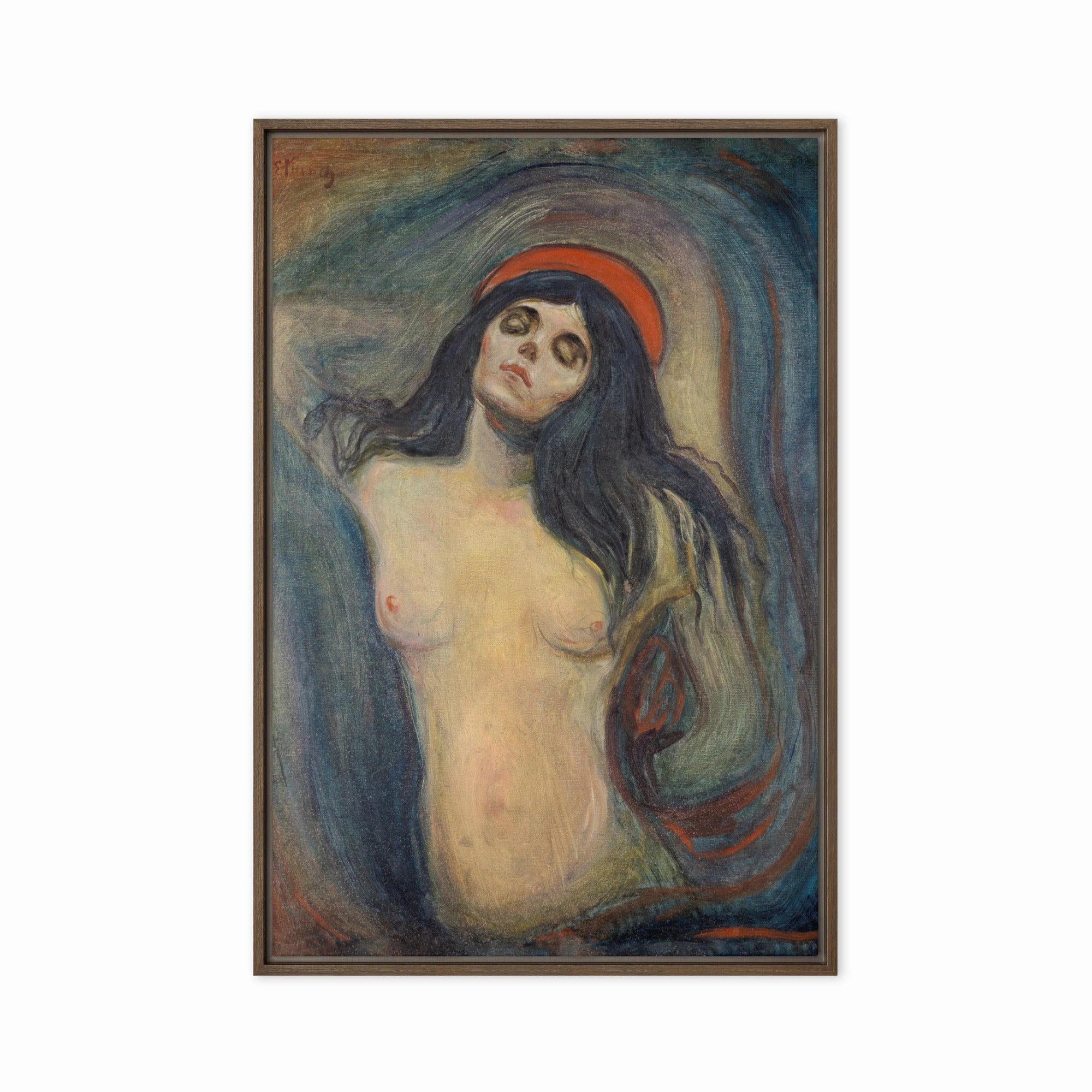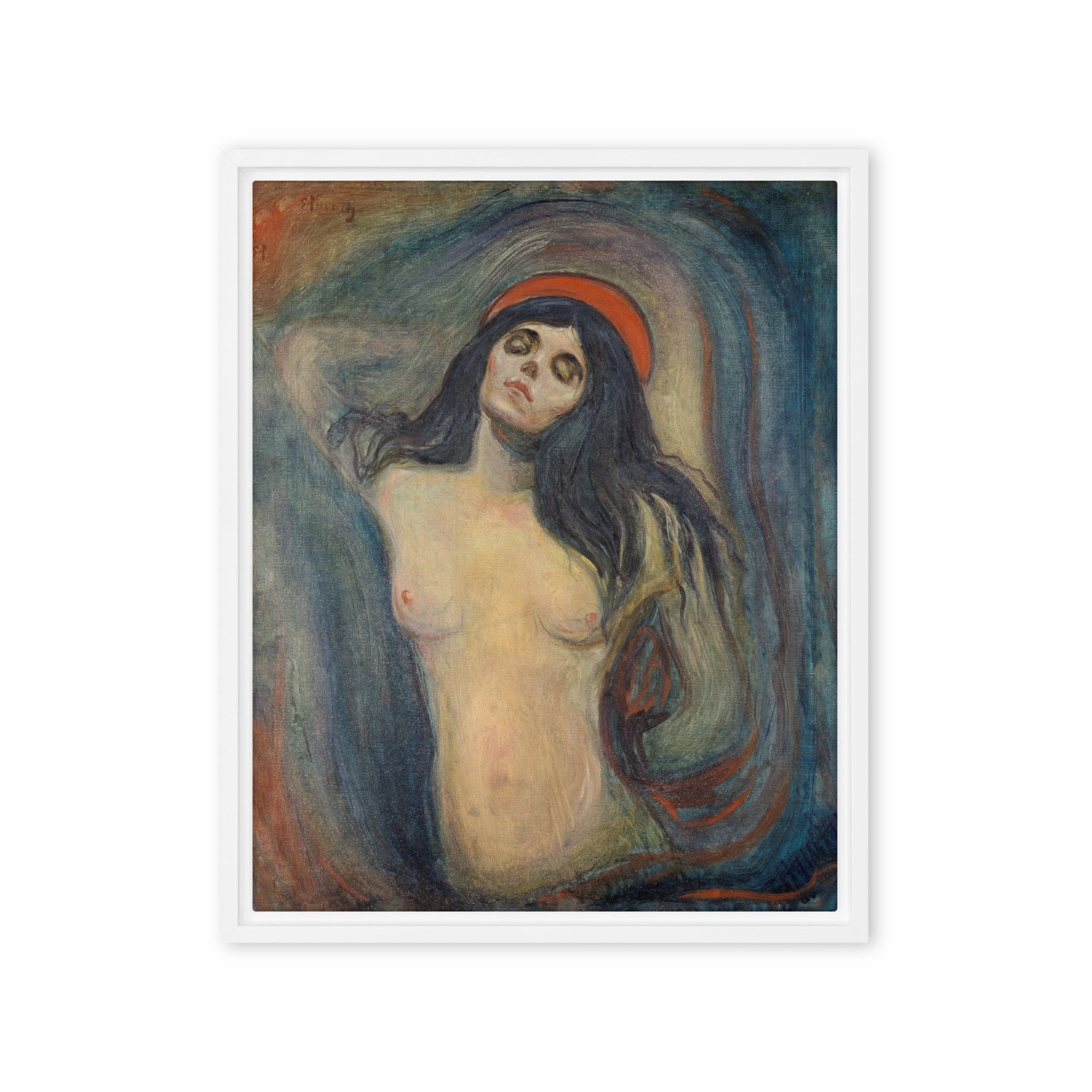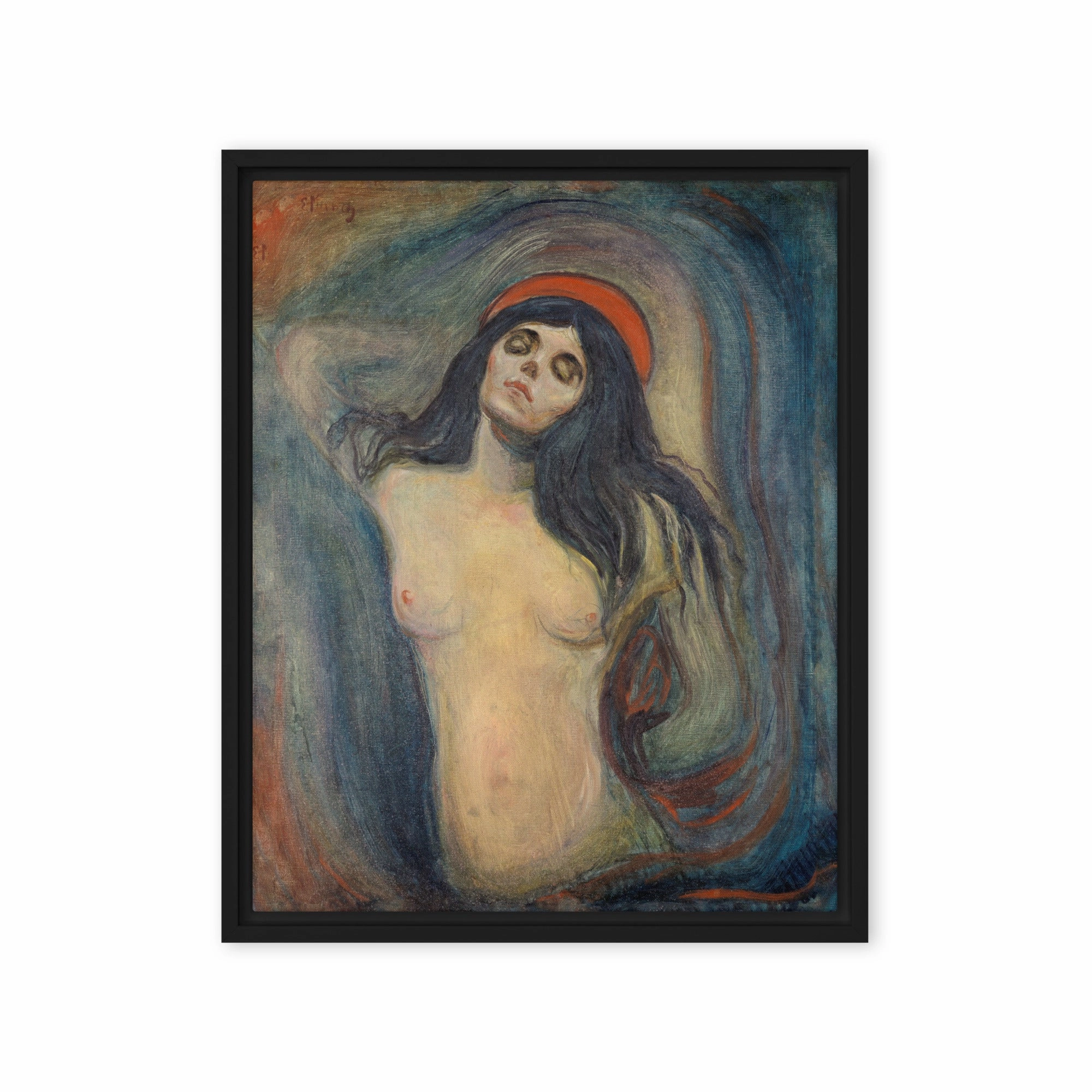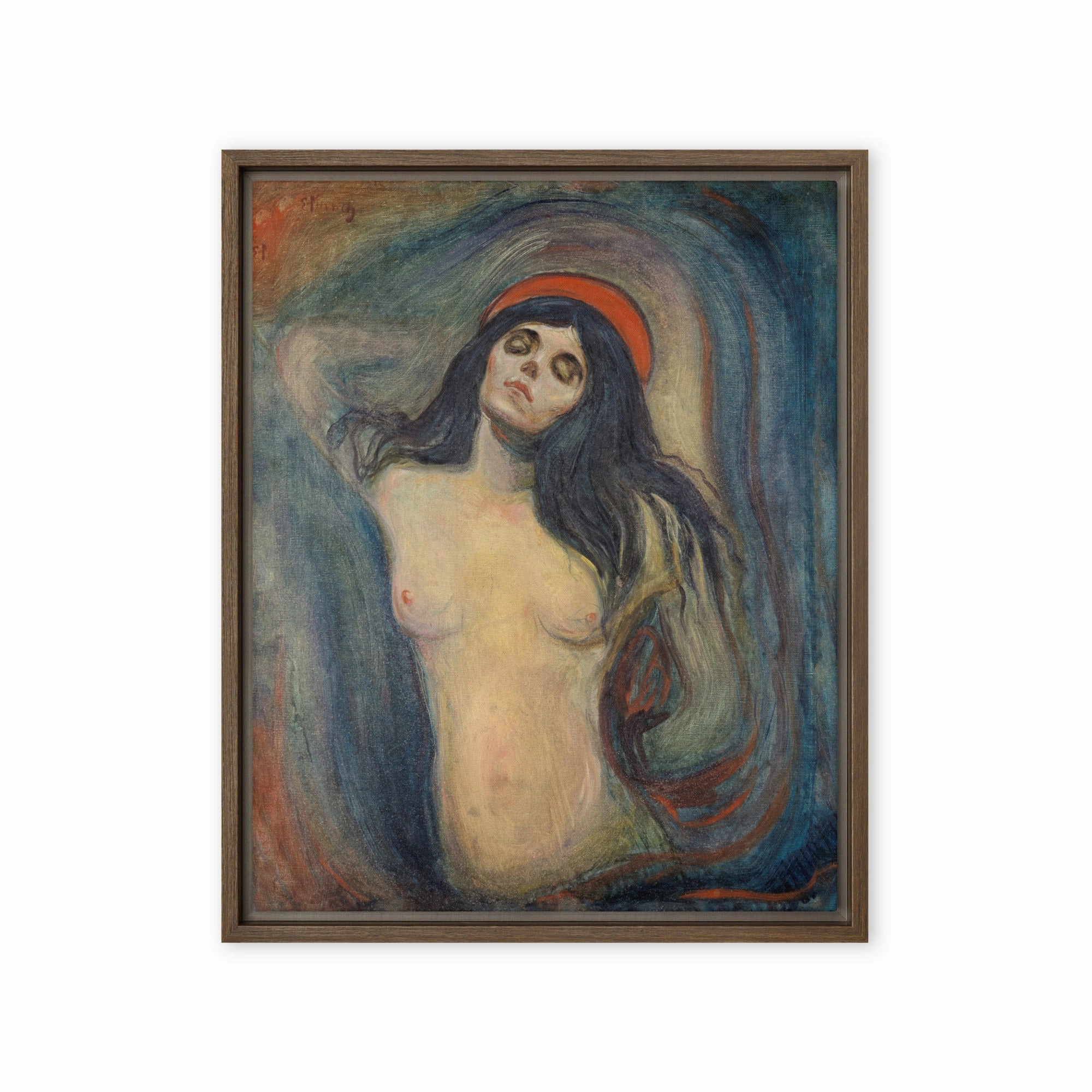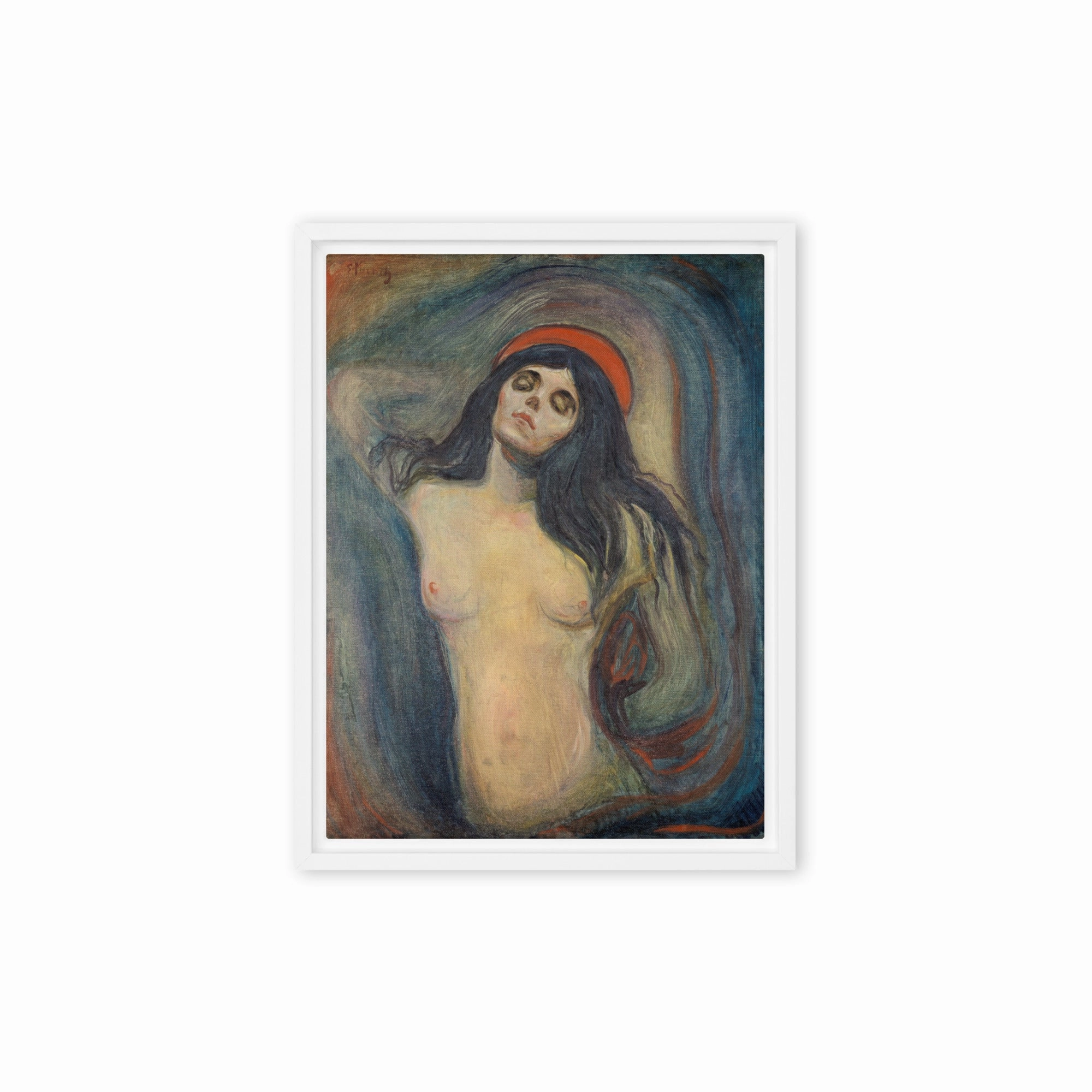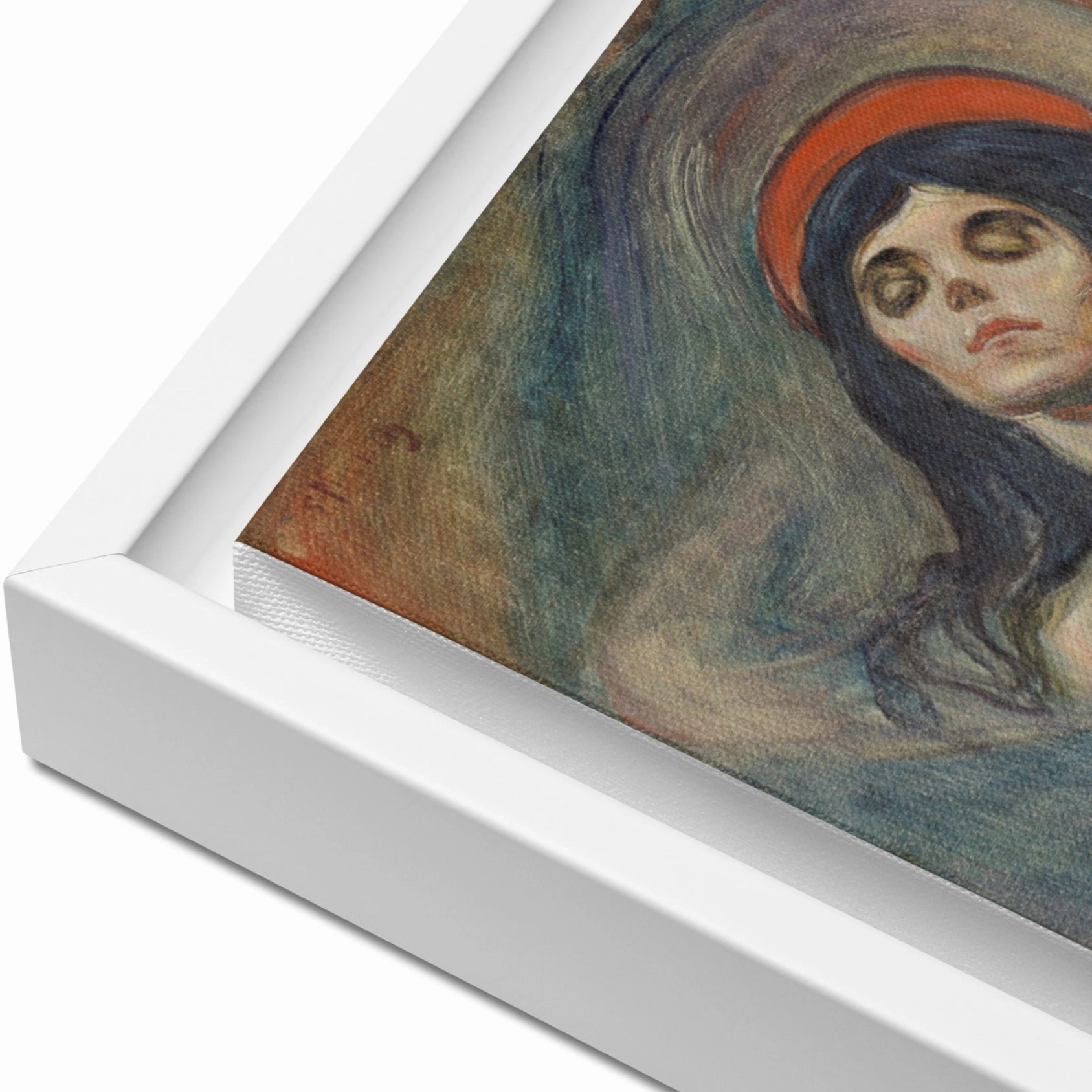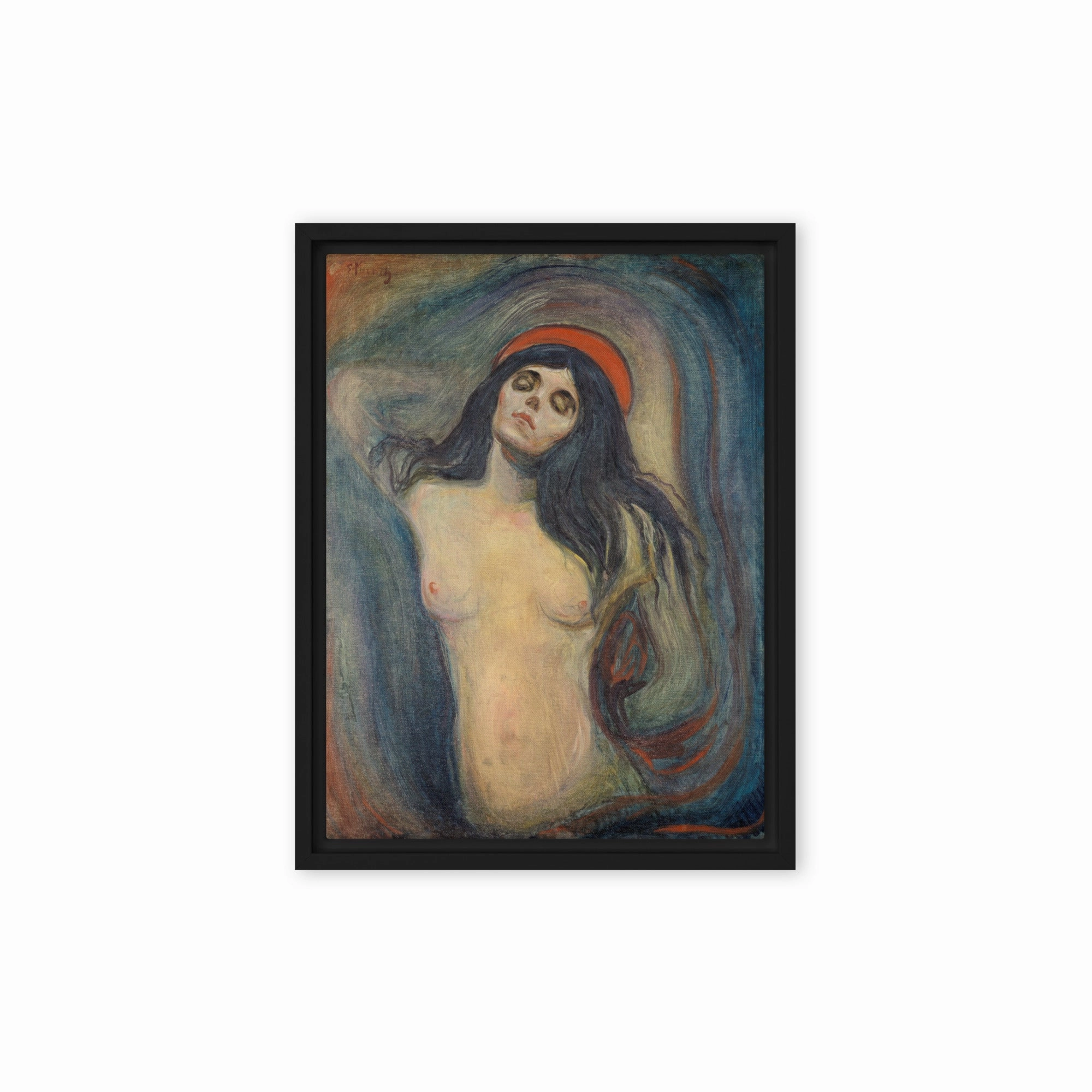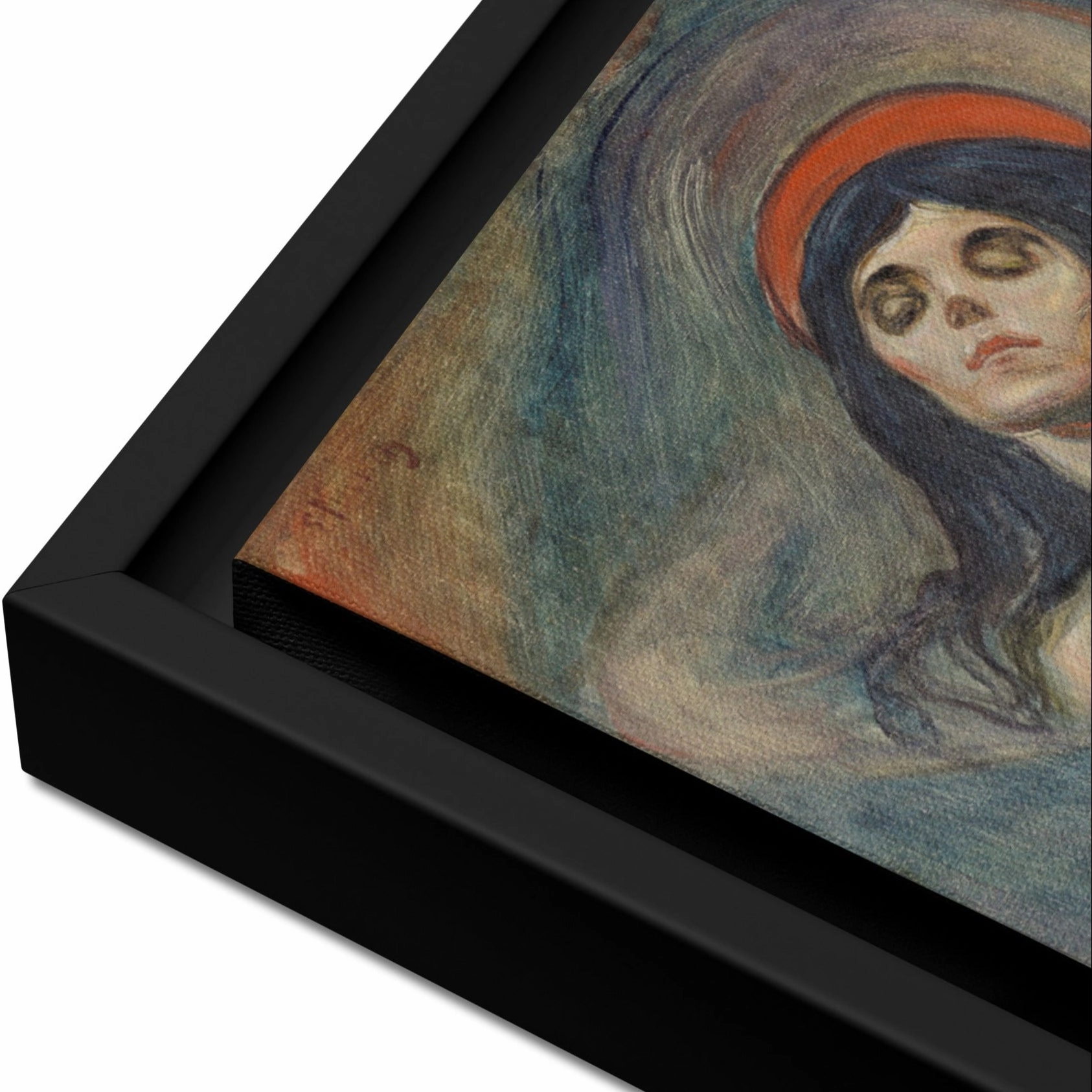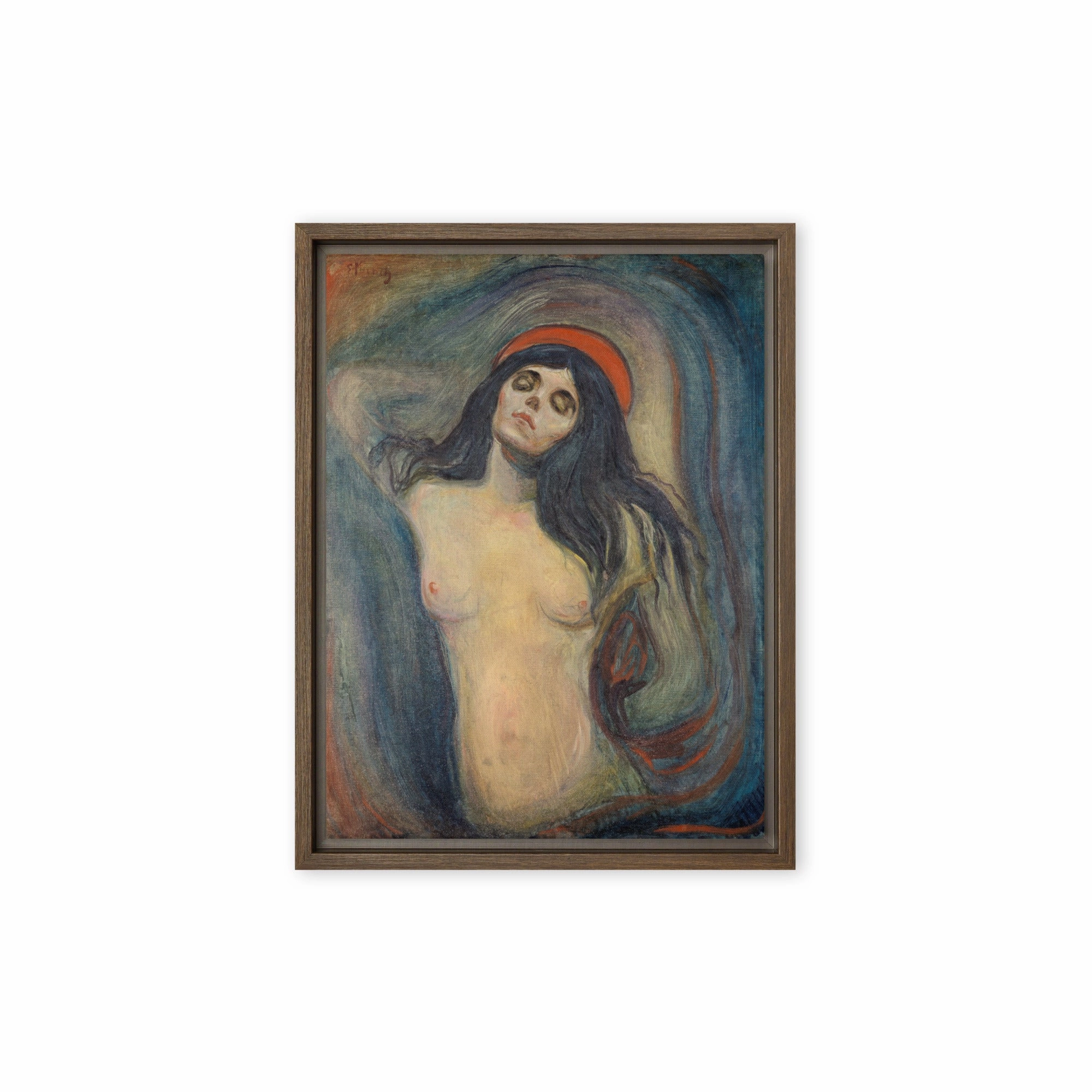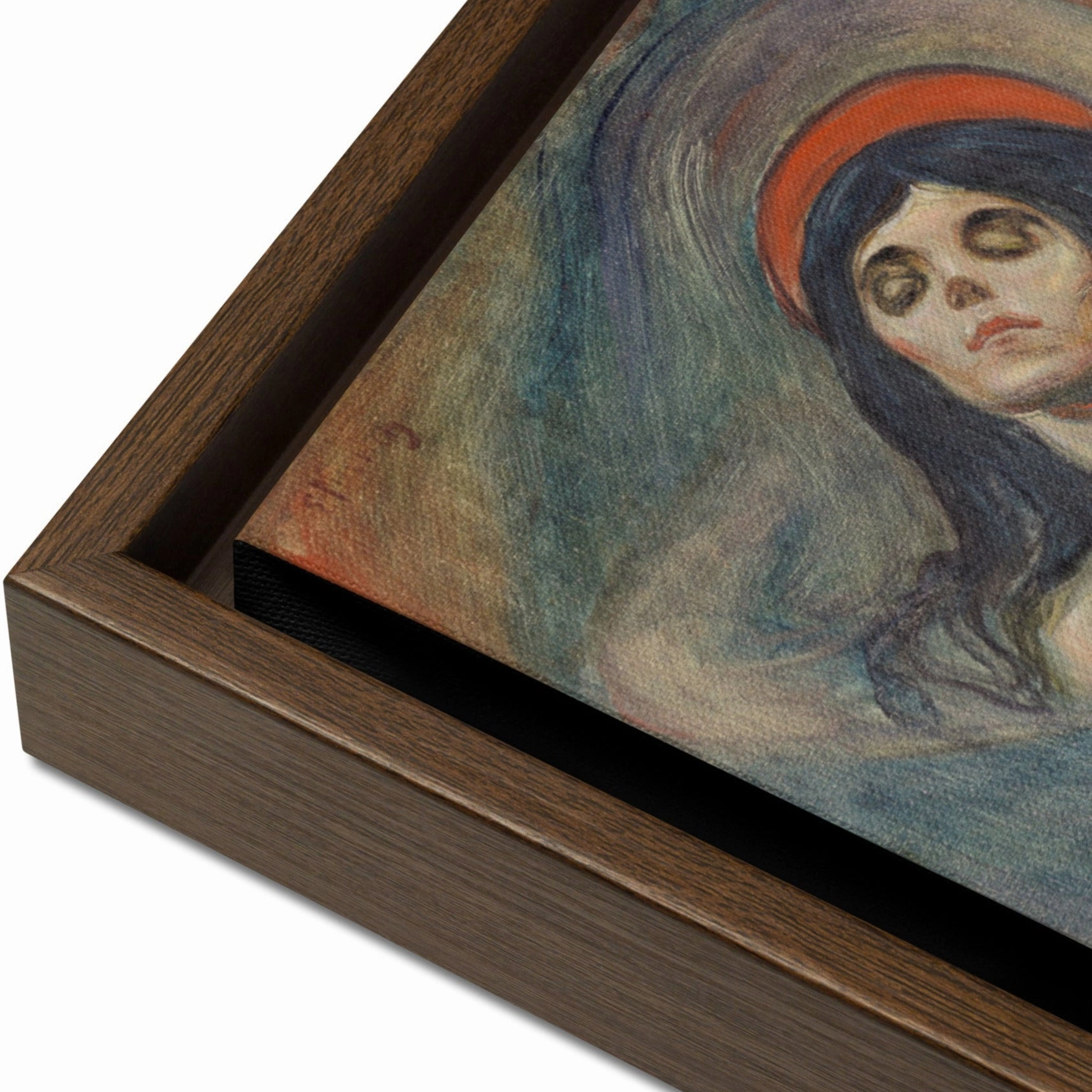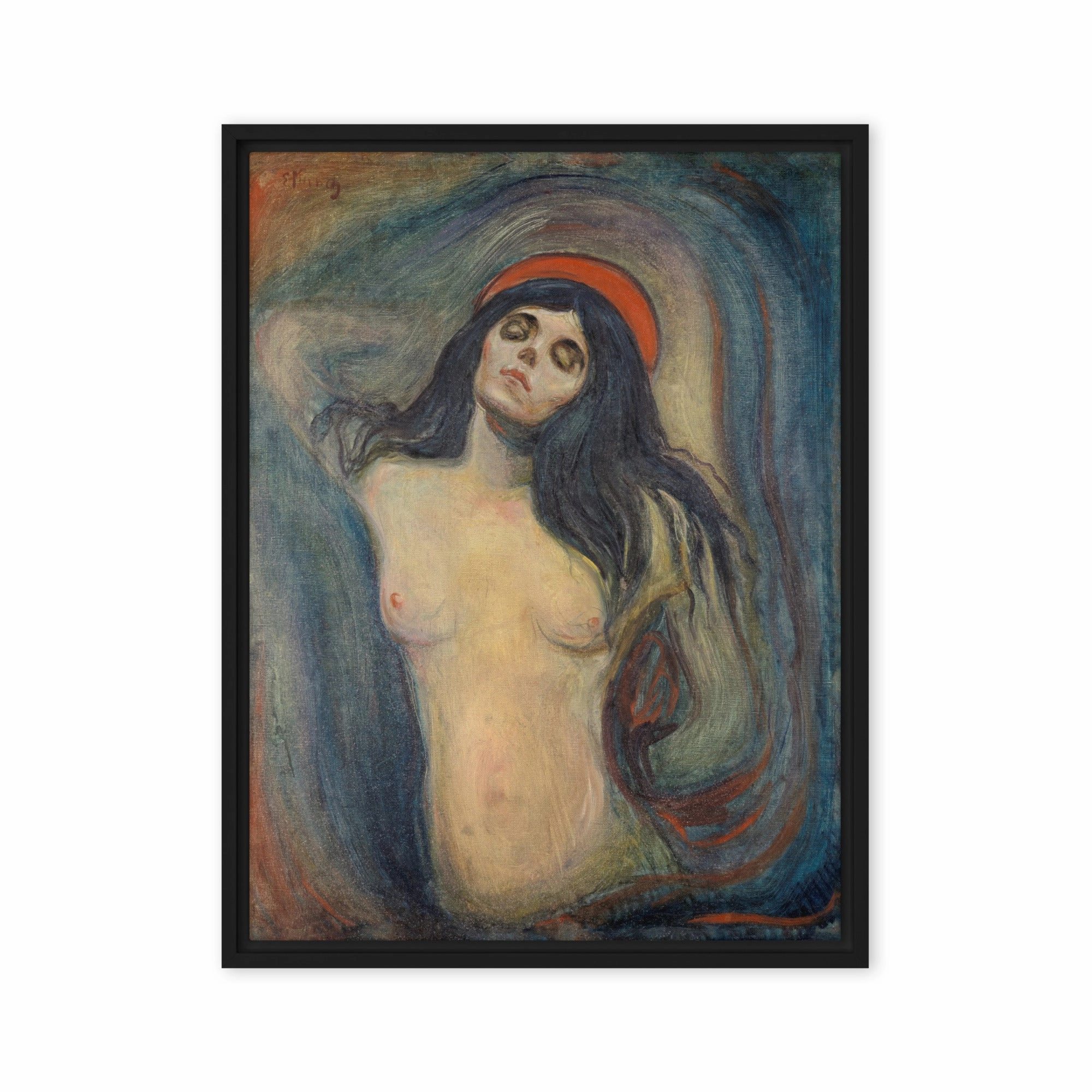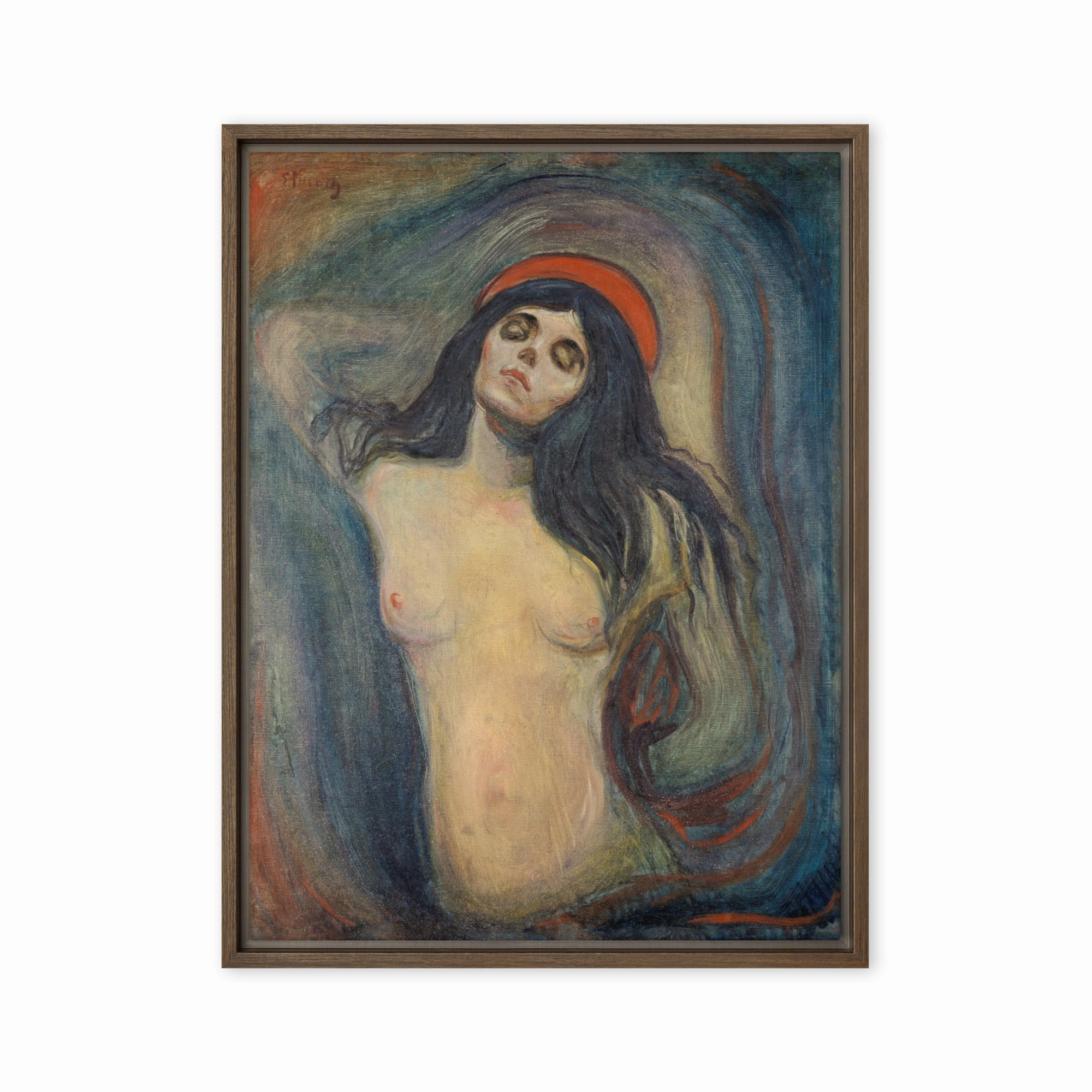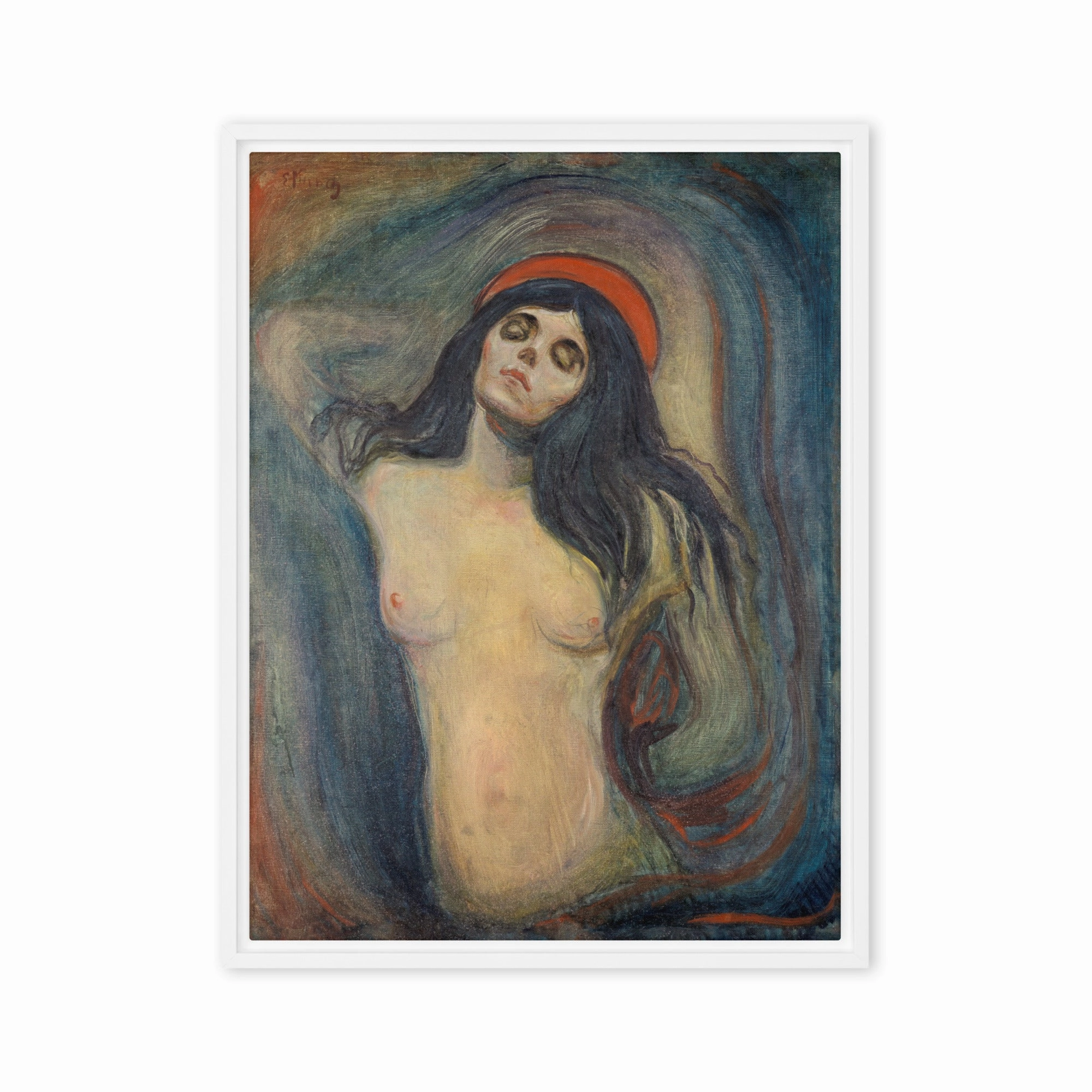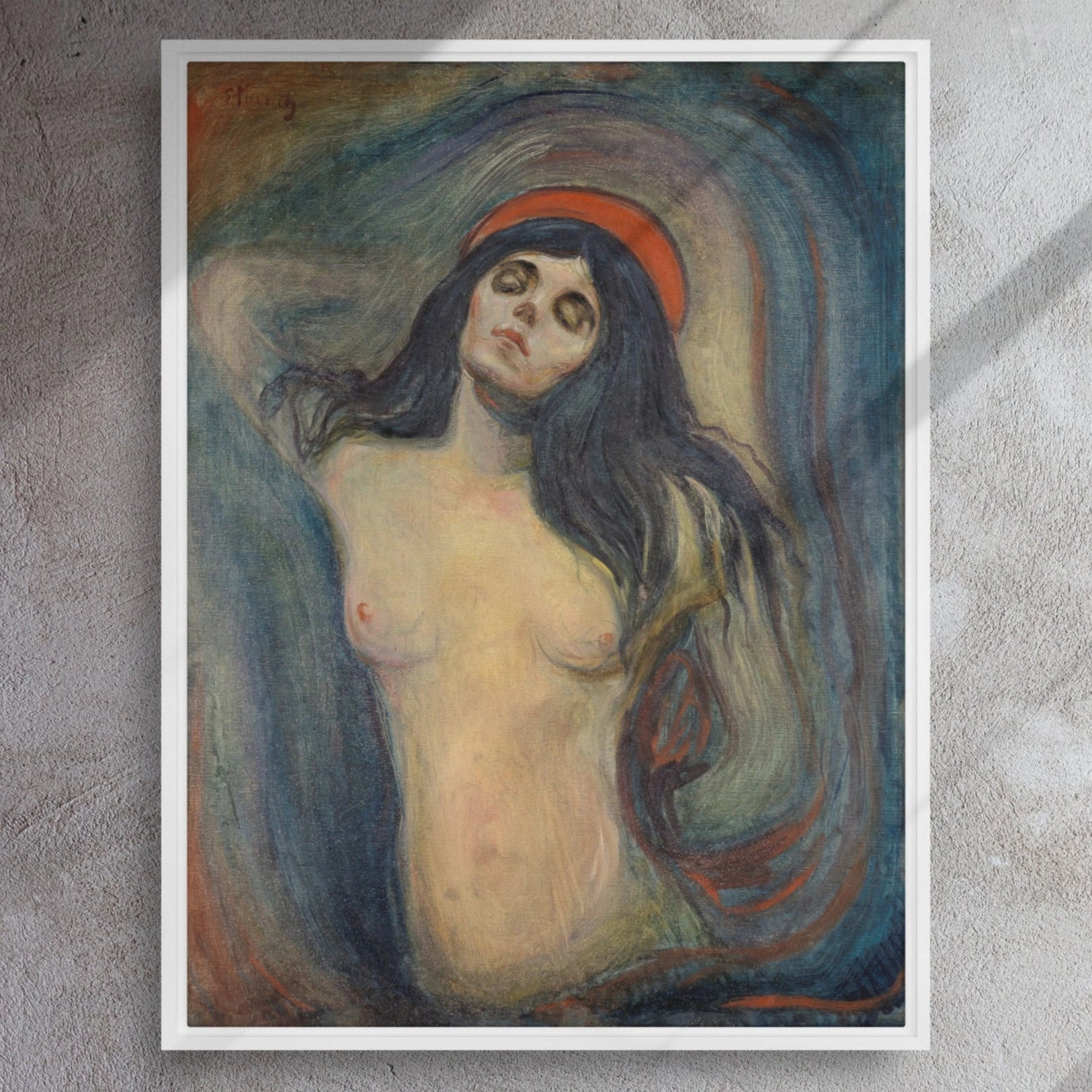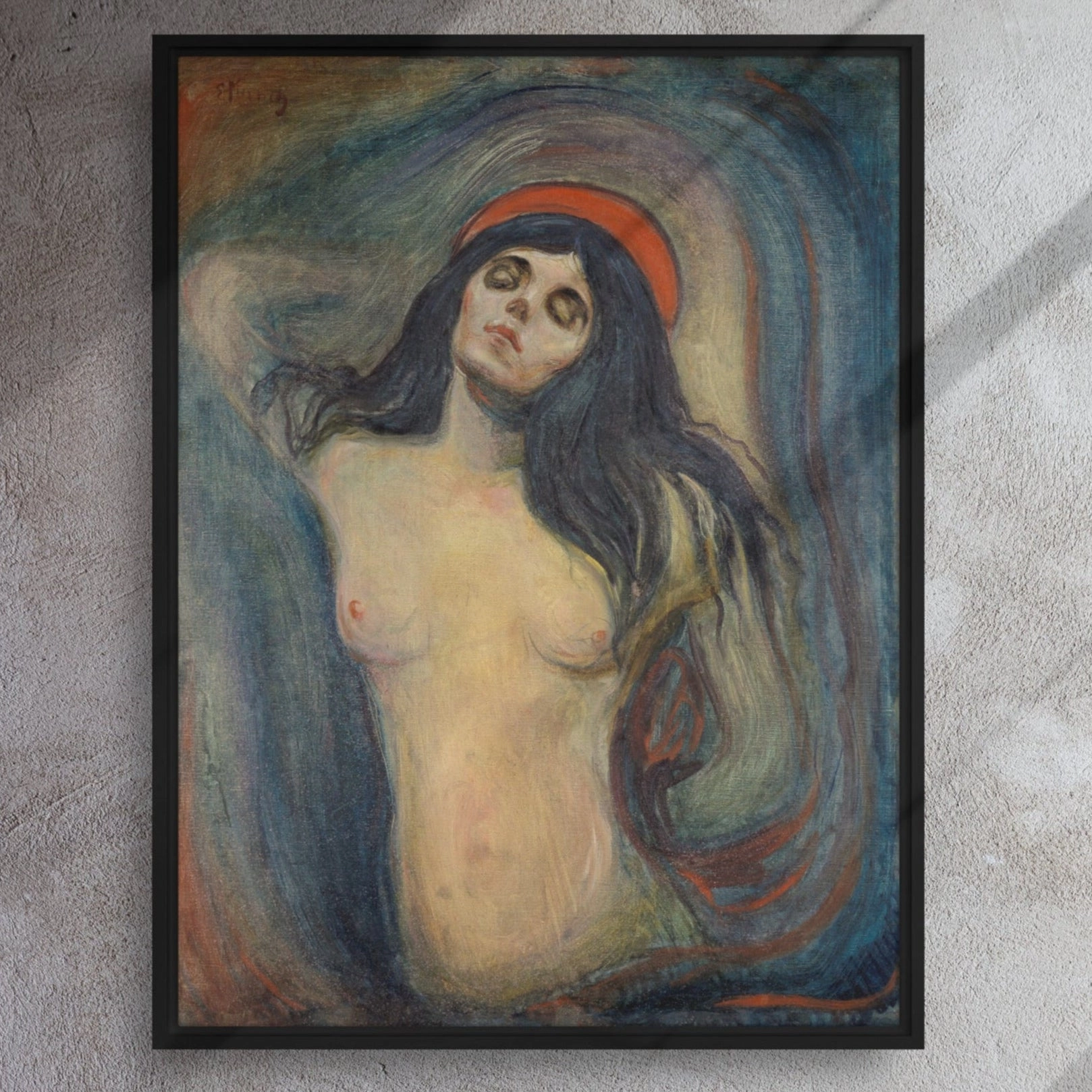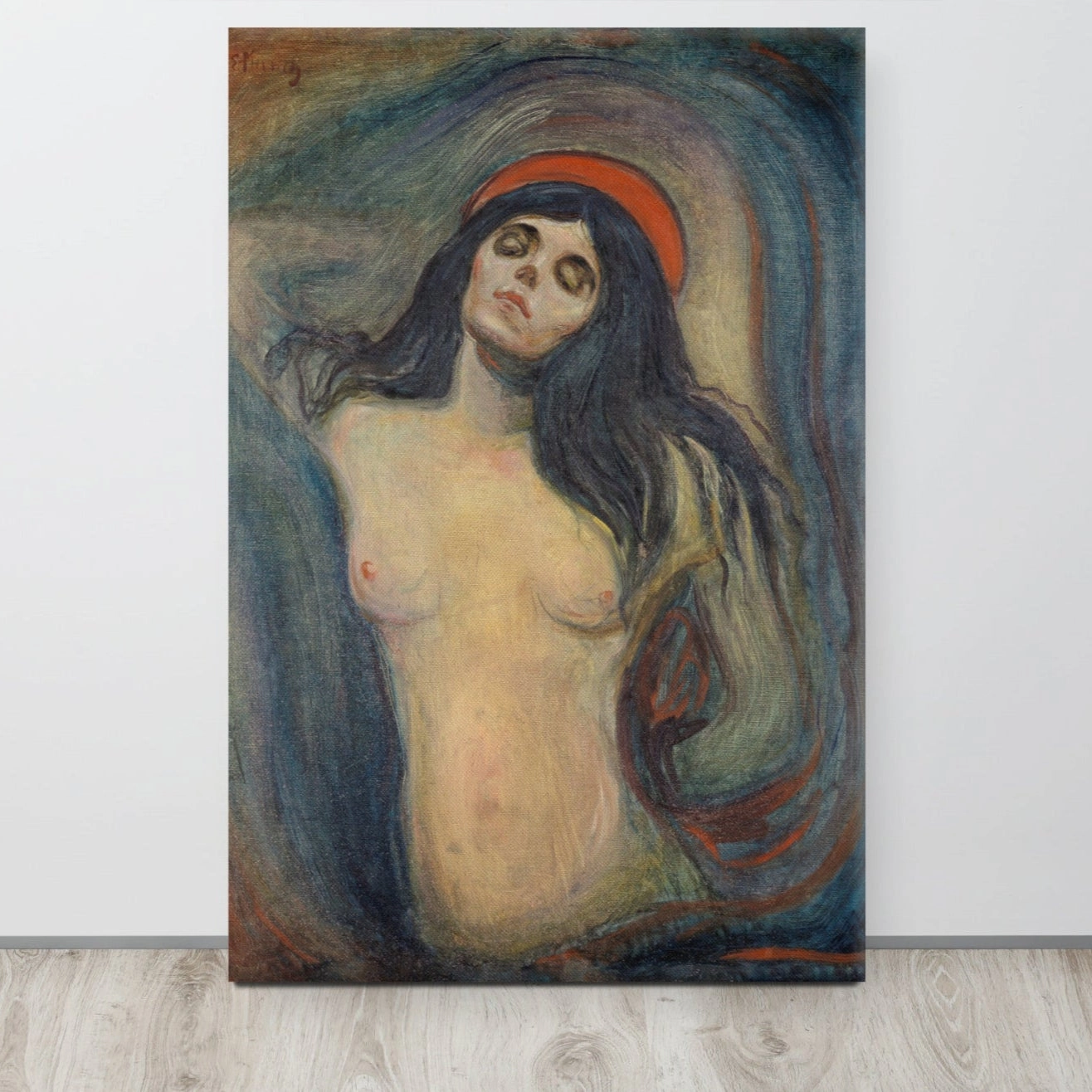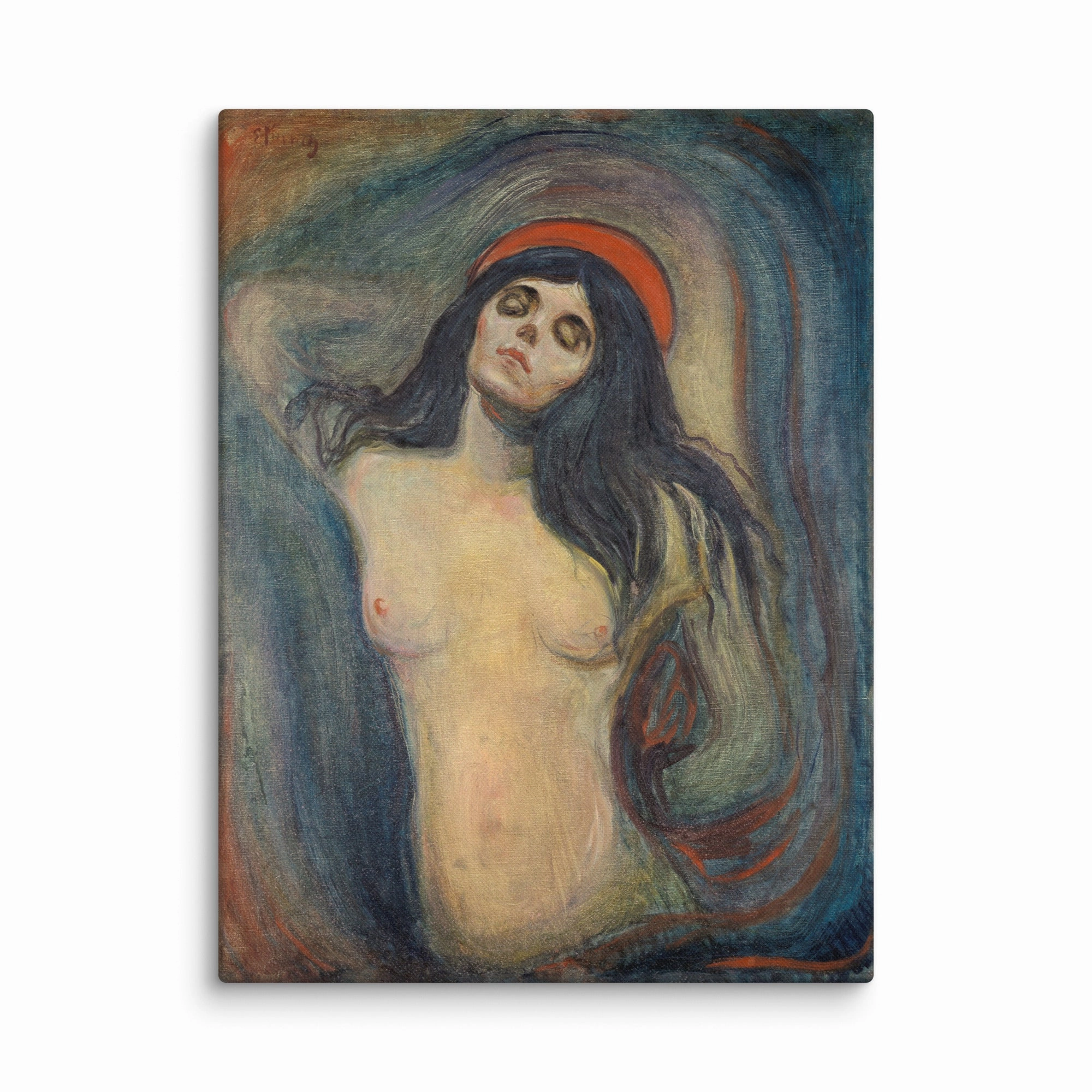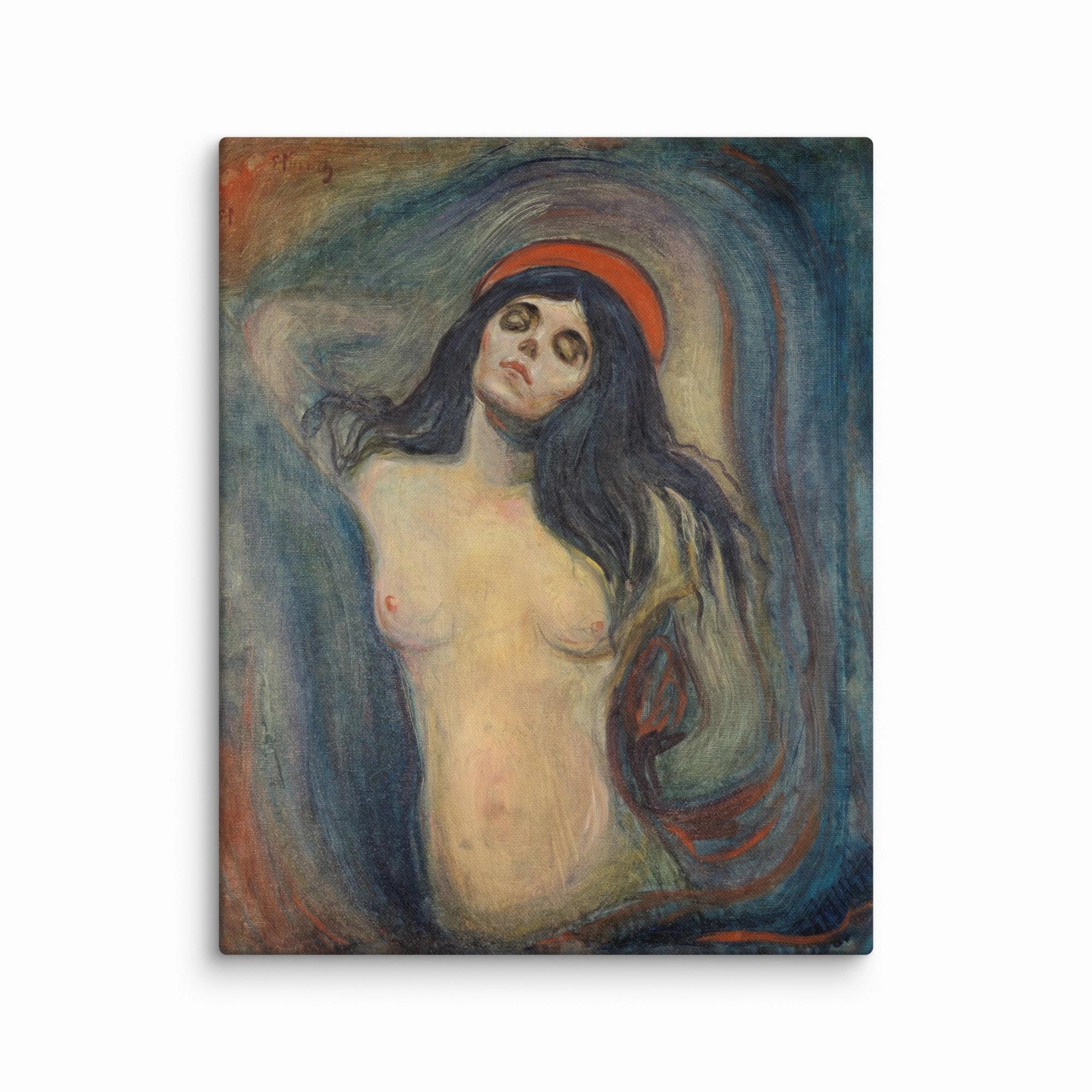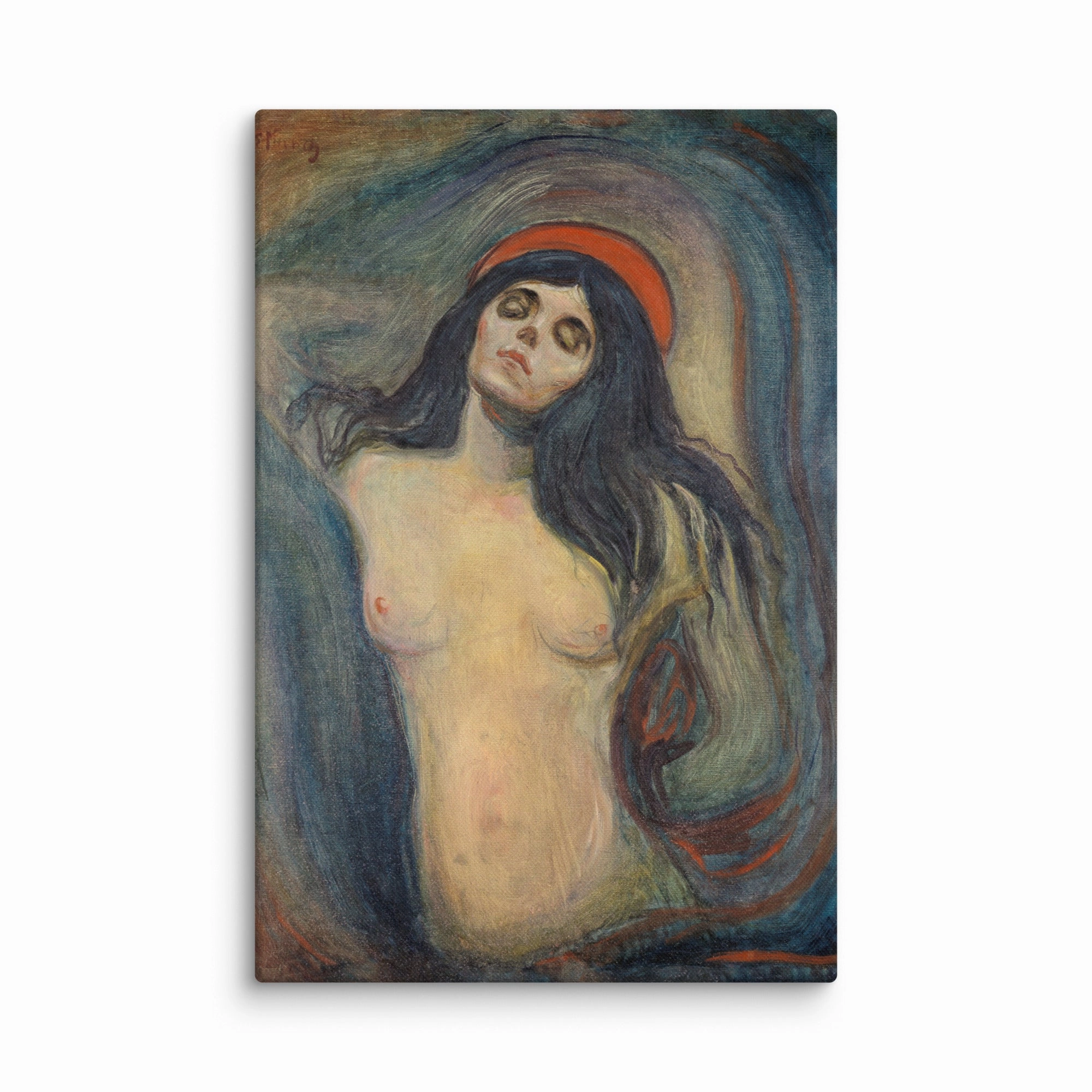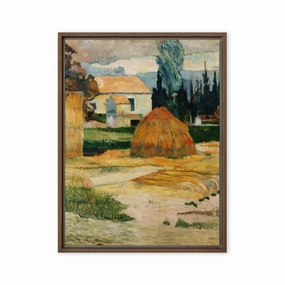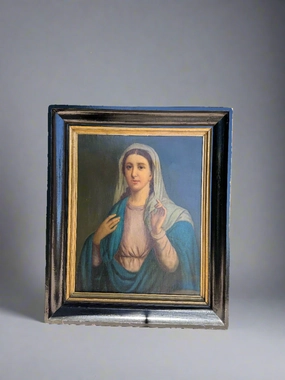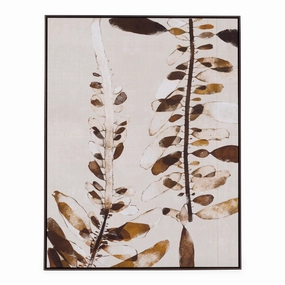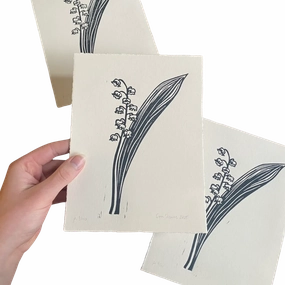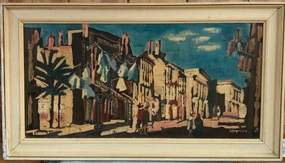Framed Canvas - Edvard Munch, Madonna
"Pep up your empty walls with this eye-catching framed canvas! This high-quality framed canvas - Edvard Munch, Madonna made of pine wood comes with rubber pads on the back corners and a wall mount that allows for easy hanging of the artwork. Additionally, the frame gives the canvas a cool floating effect!"
Frame: pine
Frame thickness: 3.18 cm (1.25)
Canvas fabric weight: 344 g/m /- 25g/m (10.15 /- 0.74 oz/yd)
Open back
With rubber buffers on the rear corners
Suspension attached
Blank from the USA
Disclaimers:
- The framed canvases with brown and black frames have a black interior around the canvas and the canvases with white frames have a white interior around the canvas.
- This product is not intended for sanding or cutting doing so creates airborne dust that can cause lung irritation.
canvas without frame
Looking for some flair for your office or home? Your search ends here! This canvas print - Edvard Munch, Madonna with vibrant and fade-resistant colors is sure to catch the eye.
1.25 thick polycotton blend canvas fabric
Canvas fabric weight: 344 g/m /- 25 g/m (10.15 /- 0.74 oz./yd.)
Lightfast
Manually stretched over a solid wood stretcher frame
Mounting brackets included
Blank from the USA, Canada, Europe, Great Britain or Australia
Madonna by Edvard Munch: The Loving Woman and the Mystery of Love, Life, and Death
Edvard Munch, one of the most important representatives of Symbolism and Expressionism, created numerous works that delve deep into the human psyche. His work Madonna also known as Loving Woman (Elskende kvinne) is among his most famous and controversial images. In this work, Munch presents an unusual interpretation of the Madonna, which is far removed from the traditional depiction as a holy mother figure. Instead, he presents a woman who embodies sensuality, creation, and the transience of life.
Between 1894 and 1897, Munch created several versions of Madonna, including five paintings and numerous lithographs. Each version differs in details, color scheme, and mood, revealing new aspects of the image each time. Yet one thing remains the same in all versions: the enigmatic, almost transcendent aura of the depicted woman, who seems to bridge the gap between life and death.

 Cart(
Cart(